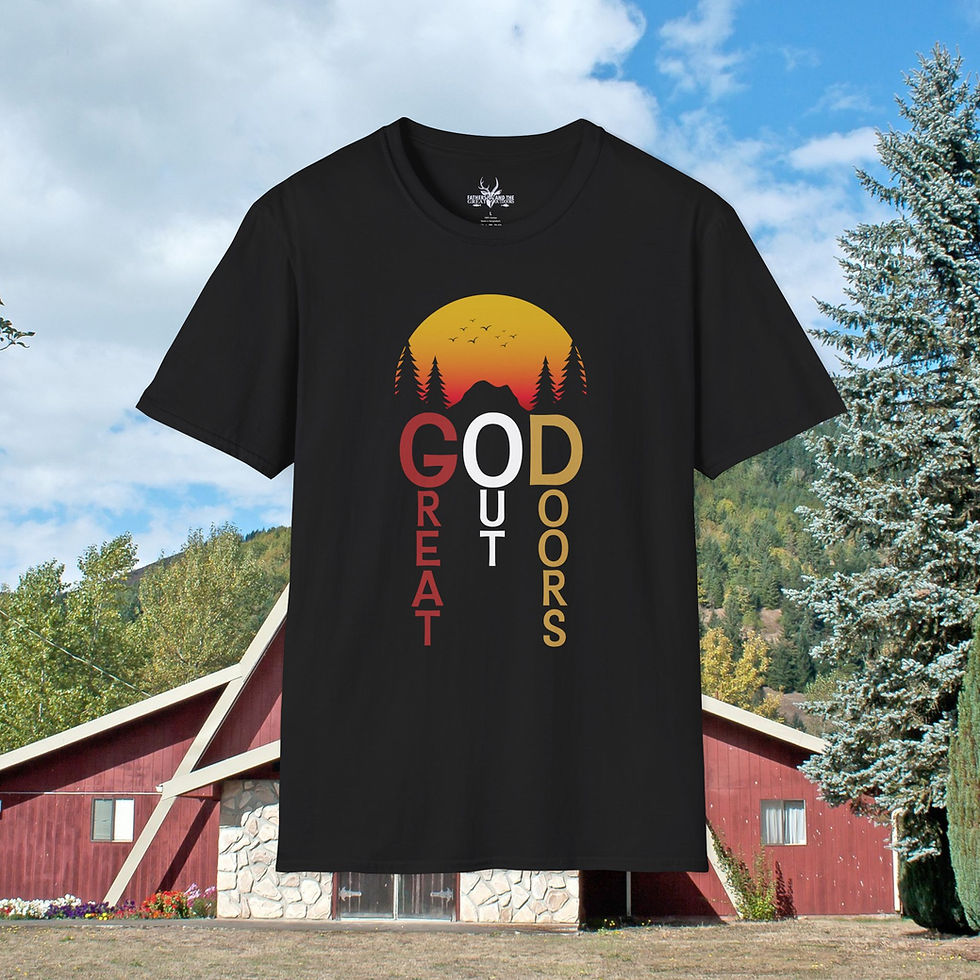Where To Find Buck Bedding Areas
- Jacob Whitley
- Jan 17
- 5 min read
The idea of tracking deer to their bedding areas is something that is foreign to a private land hunter. Hunting private properties is a game of hope that deer will walk by the tree stand as they travel through the property. The biggest benefit to private land is the vastness of it. You have the ability to explore far and wide with far fewer limitations. If deer are in that area, they also live in that area. This means that while hunting this land can be more challenging, you are also hunting where these deer live. With enough patience and practice, finding where these deer are bedding is now possible and a skill that will allow you to track down bigger bucks. Here are the key locations my research has shown to be the best places to find where bucks are bedding.
Tall Grass

Whitetail bucks particularly enjoy bedding in fields of tall grass, such as CRP land, goldenrod, or marsh grasses. These areas are often left undisturbed, providing a natural camouflage where deer can hide their bodies while still maintaining visibility over the grass. It also allows bucks to watch for predators or hunters while lying down. However, the disadvantage for bucks comes to those who know how to spot those beautiful antlers along the horizon of the grass. If a buck isn't paying attention, this could allow a hunter who is quiet on their feet to sneak up on a bedded buck. In most cases though, the grass hides the deer from view when lying down. This makes it hard for predators to spot them. and can cause hunters to step right up to them without knowing they are there, spooking them away. Often, these grassy areas are near food sources like agricultural fields or natural forage, allowing for quick feeding trips.
Conifers

Conifers are trees that bear cones and needle-like or scale-like leaves that are typically evergreens such as pine trees. Areas with dense coniferous, like pine or cedar thickets, are favored by deer for their year-round cover. They offer a thick canopy and underbrush that not only hides deer from aerial predators like eagles but also from ground threats. Because they are evergreens conifers keep their foliage, providing consistent cover from wind, snow, and rain, maintaining a more comfortable microclimate as well as security. If you find yourself hunting in or after a rain or snowstorm, this is the type of area you are going to want to scout for deer. This will also be your best bet for heavy wind days. There is far more to go into about wind, but that is for a future article. These are also great areas to find turkeys as they love to scratch through fallen pine-straw to find bugs.
Hillside Bench

A bench on a hillside is essentially a flat area partway up a slope where a buck can rest comfortably while providing a strategic lookout over the lower ground where predators might approach. Similar to a spot we might choose to build a fort with a high ground advantage. This makes it especially difficult for hunters to close the distance gap. Often, this is the type of bedding that can be found through glassing. The biggest skill of the hunter is sneaking in without spooking the deer as the hillside also provides for a quick escape over the ridge or downhill if necessary.
Blowdowns

More often found where heavy winds have caused areas of trees to have fallen, creating natural barriers. Bucks will often bed with their backs to these fallen trees, using them as a shield from predators approaching from behind. Similar to those who like to sit facing the door in a restaurant often associated with CCW holders or veterans struggling with PTSD. It provides instant protection from one direction, allowing the deer to focus on threats from the front. The complex layout of fallen trees can confuse predators, giving deer multiple escape options.
Hedgerow

Hedgerows are more associated with urban settings or as a divide within farmlands. They act as natural or artificial barriers along field edges, offering both concealment and visibility. A buck can bed within or near a hedgerow, using its height and density for cover while still having a view to the sides.
They offer multiple paths of escape along or through the hedgerow for quick evasion. Often, hedgerows are near food sources, increasing convenience.
River or Creek Bank

We all need water and deer are no different. High, bushy banks along rivers or creeks provide a strategic bedding area while also providing an easy water source. Deer can use the elevation on the banks for safety and bed down in the thick vegetation. This cover allows them to watch for threats along the waterway. They also have a perfect view down the waterway. A lot of predators often avoid crossing water, giving deer an additional layer of safety as they do not mind the swim. Creeks that rest between two slopes or mountains are an ideal place to find deer. You will likely find heavily used rubs in these areas as well.
Ridge End

Bucks also like to bed just off the end of a ridge or spur for a panoramic view. This position is higher than the surrounding land, allowing them to spot dangers from a distance while still being close to escape routes. It provides an excellent lookout point. with multiple paths down, up, or around the ridge for escape. Often, the wind direction at the ridge end can be predicted, aiding in scent detection. This makes it especially difficult for hunters to approach from a distance
Look For Rubs

Rubs are also a great indication that deer are bedding nearby. Especially heavily used rubs. These often indicate a place where a buck first visits after leaving his bed to spend some time in the morning rubbing his antlers. Antlers are like an itch they love to scratch. After the end of the season when a buck sheds its antlers, the reaction to the relief reminds me of the same feeling we had as a kid when we had a loose tooth. It is a sort of weird feel-good-hurt and we cannot wait to get rid of it as we wiggle it free.
Each of these bedding areas is chosen not just for comfort but for survival, highlighting the deer's acute awareness of their surroundings and their need for a strategic escape plan. Understanding these preferences can significantly enhance one's ability to predict deer behavior, whether for hunting, wildlife observation, or conservation efforts. Deer are incredibly smart when it comes to self-preservation. Respecting their intelligence is the first key to becoming a better hunter and being able to place yourself where they feel safe without them knowing that you are there.









































Comments